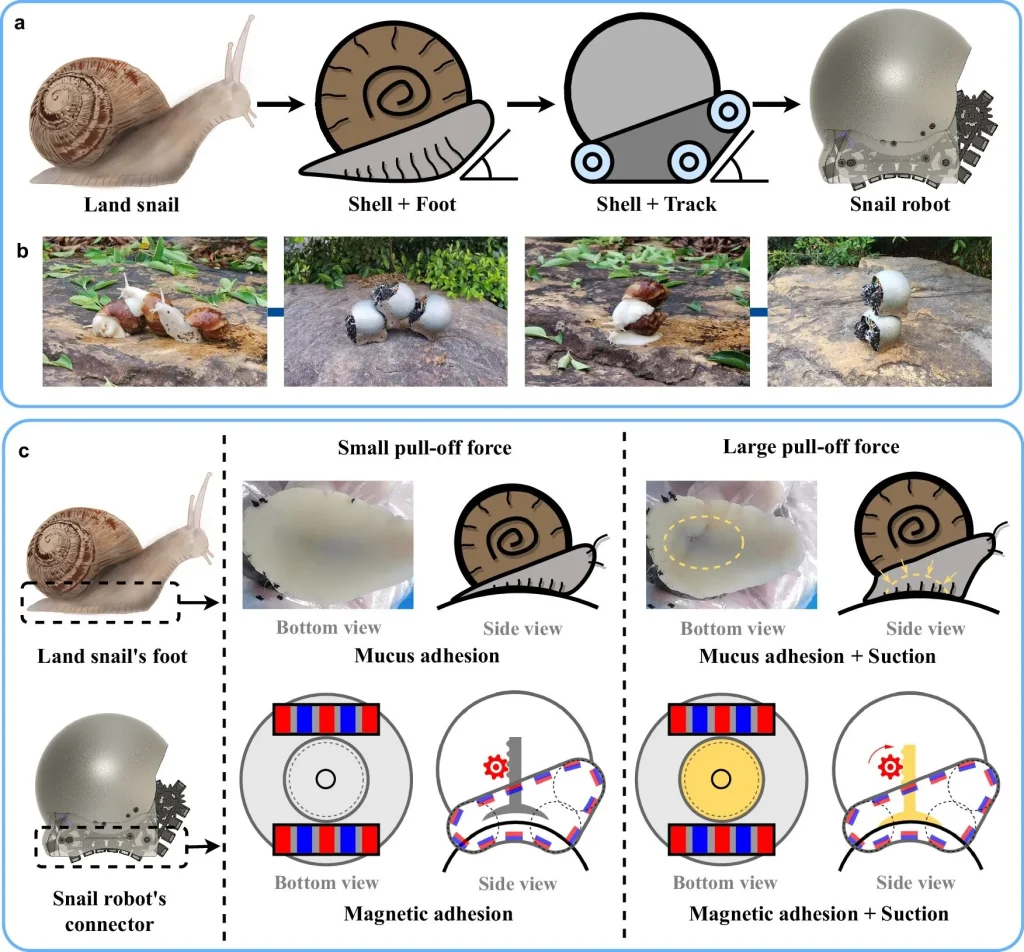To mimic the efficiency and adaptability of snails, researchers at The Chinese University of Hong Kong have developed groundbreaking robotic technology. These “robo-snails” are not only capable of independent operation but can also collaborate in swarms to achieve complex tasks previously deemed challenging.

Swarm Robotics: A New Frontier
The concept of swarm robotics involves utilising multiple small robots that can operate independently or collaboratively. These robots communicate with each other to coordinate movements, allowing them to perform tasks like search and rescue in disaster zones or exploration in hazardous environments.

The Evolution of Robotic Mobility
Unlike aerial and underwater robots that can move in three dimensions by joining together, terrestrial robots have been limited to two-dimensional formations due to their horizontal movement capabilities. Most existing models struggle to navigate rough or uneven surfaces.

Inspired by Nature: The Robo-Snail Design
Inspired by the White Jade land snail, the robo-snail is equipped with a spherical ferromagnetic iron shell containing essential electronics, including a microprocessor and battery. It moves on rubber tracks embedded with magnets, facilitating movement across various terrains.
Adaptive Functionality: From Movement to Collaboration
In its “free mode,” the robo-snail navigates using its tracks, while in “strong mode,” it deploys a retractable suction cup for secure attachment to other robots. This innovative feature allows them to form structures and overcome obstacles collaboratively.

Real-World Applications and Future Prospects
In outdoor tests, these robots have demonstrated capabilities such as climbing over ledges, bridging gaps, and even coalescing into a functional robotic arm. While current experiments are controlled remotely, future iterations aim for autonomy in diverse applications.
Towards Technological Advancement
The development of robo-snails represents a significant stride towards enhancing robotic capabilities inspired by biological principles. As research progresses, these innovations promise to revolutionise fields ranging from robotics to planetary exploration.
